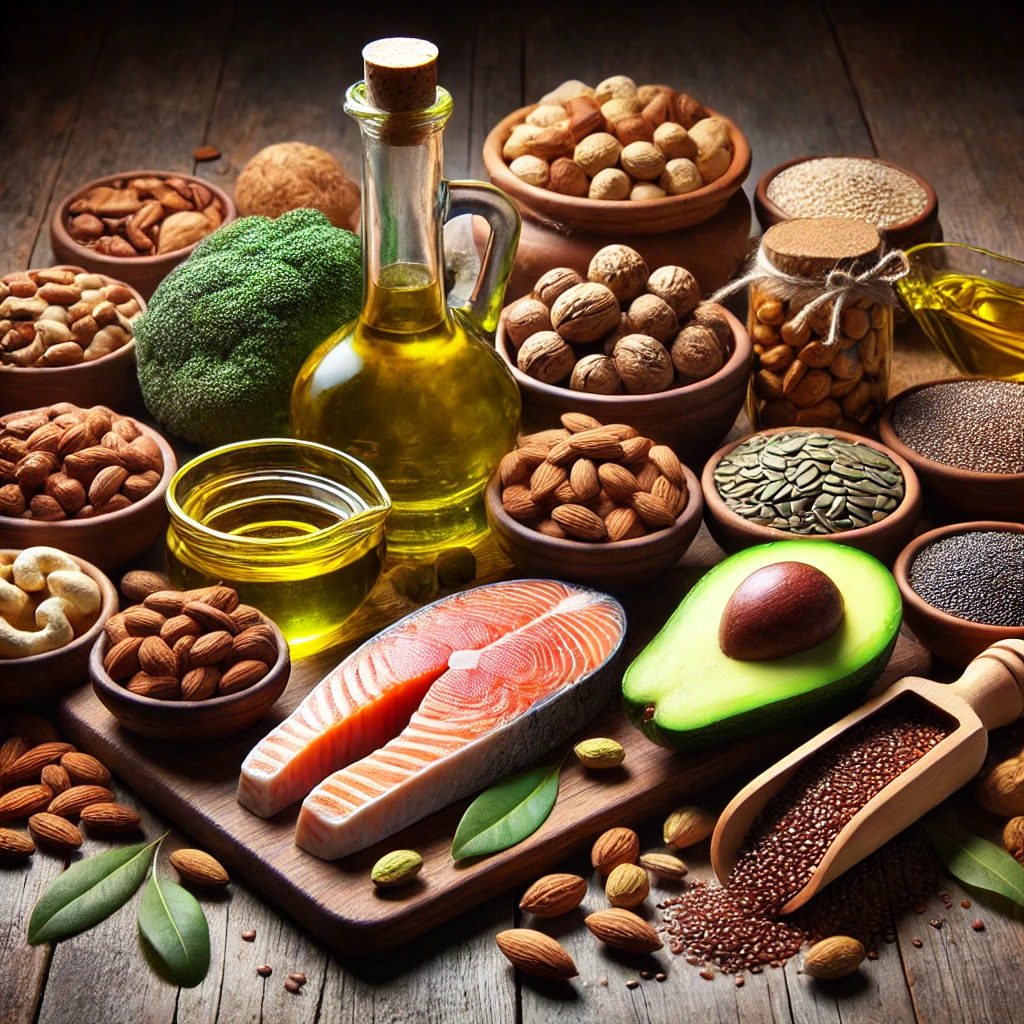Fats are one of the three main macronutrients, alongside carbohydrates and proteins, and play an essential role in maintaining overall health. Despite often being misunderstood or demonized, fats are crucial for energy storage, cell function, and the absorption of vital nutrients. They support brain health, protect organs, and help regulate body temperature. However, not all fats are created equal. Understanding the functions and sources of fats can help you make informed dietary choices that support long-term well-being.
Functions of Fats
Energy Source and Storage: Fats are the body’s most concentrated source of energy, providing 9 calories per gram. Excess energy from fats is stored in adipose tissue, serving as a long-term energy reserve.
Absorption of Fat-Soluble Vitamins: Fats enable the absorption of essential fat-soluble vitamins A, D, E, and K, which are crucial for vision, bone health, immune function, and antioxidant activity.
Structural Support: Fats are a key component of cell membranes, helping maintain their integrity and fluidity. They also play a role in the production of myelin, a substance that insulates nerve fibers.
Hormone Production: Fats are precursors for hormones, including sex hormones like estrogen and testosterone, and help regulate bodily processes.
Protection and Insulation: Fats cushion and protect vital organs from physical trauma. They also help regulate body temperature by providing insulation.
Brain Health and Function: The brain is largely composed of fat, and dietary fats, particularly omega-3 fatty acids, are critical for cognitive function and mental health.
Satiation and Flavor: Fats contribute to feelings of fullness after meals and enhance the flavor and texture of foods.
Types of Fats
Fats can be categorized into healthy and unhealthy types based on their structure and effects on health:
Unsaturated Fats (Healthy Fats)
- Monounsaturated Fats (MUFAs): Found in foods like olive oil, avocados, and nuts, these fats can help reduce bad cholesterol (LDL) levels and support heart health.
- Polyunsaturated Fats (PUFAs): Found in fatty fish, flaxseeds, and walnuts, these include omega-3 and omega-6 fatty acids, which are essential for brain health and inflammation control.
Other Fats
- Saturated Fats: Found in animal products like butter, cheese, and fatty meats, as well as tropical oils like coconut oil. While not inherently harmful, excessive consumption of saturated fats can raise LDL cholesterol levels, increasing the risk of heart disease.
- Trans Fats (Unhealthy Fats): Found in processed and fried foods, trans fats are artificially created and have been linked to increased risk of heart disease. It’s best to avoid these entirely.
Sources of Fats
Incorporating healthy fats into your diet is essential for maintaining overall health. Here are some common sources of fats:
Healthy Fat Sources
- Nuts and Seeds: Almonds, walnuts, chia seeds, and flaxseeds are excellent sources of healthy fats and fiber.
- Avocados: Rich in monounsaturated fats and nutrients like potassium and vitamin E.
- Plant-Based Oils: Olive oil, canola oil, and flaxseed oil are great sources of unsaturated fats.
- Fatty Fish: Salmon, mackerel, sardines, and tuna provide omega-3 fatty acids, which support heart and brain health.
- Soy Products: Tofu and soy milk offer healthy fats along with protein.
Saturated Fat Sources (Consume in Moderation)
- Coconut and Palm Oils: Often used in baked goods and processed foods.
- Meat: Fatty cuts of beef and lamb.
- Dairy Products: Cheese, butter, and whole milk.
Trans Fat Sources (Avoid)
- Processed Foods: Margarines, shortening, and baked goods like cookies and cakes.
- Fried Foods: Items like French fries and fried chicken often contain trans fats.
Balancing Fat Intake
Balancing fat intake is crucial for maintaining overall health, supporting bodily functions, and reducing the risk of chronic diseases. Fats are essential macronutrients that provide energy, aid in nutrient absorption, and play a role in hormone production. However, the type and amount of fat consumed are significant factors to consider.
Choose Healthy Fat Sources: Incorporate foods rich in unsaturated fats, such as olive oil, avocados, nuts, and fatty fish, into your diet.
Limit Saturated Fat Consumption: Opt for lean cuts of meat and low-fat dairy products. Trim visible fat from meats and remove poultry skin before cooking. Use cooking methods like grilling, baking, or steaming instead of frying.
Avoid Trans Fats: Read food labels to identify and avoid products containing partially hydrogenated oils. Limit intake of commercially baked goods and fried foods.
Monitor Portion Sizes: Even healthy fats are calorie-dense. Be mindful of portion sizes to avoid excessive calorie intake.
Cook with Healthy Oils: Use oils high in unsaturated fats, such as olive or canola oil, for cooking and dressings.
Increase Fiber Intake: Consuming fiber-rich foods like fruits, vegetables, and whole grains can help manage cholesterol levels and support heart health.
Conclusion
Fats are vital for providing long-term energy, protecting organs, supporting brain function, and aiding in the absorption of fat-soluble vitamins (A, D, E, and K). They are also involved in hormone production and maintaining healthy cell membranes. A balanced intake of healthy fats is crucial for maintaining good health, while limiting unhealthy fats can help reduce the risk of chronic diseases.
